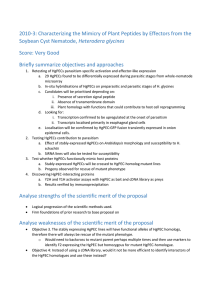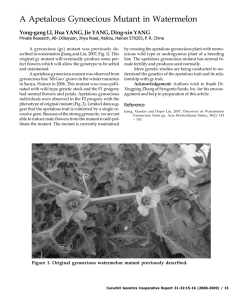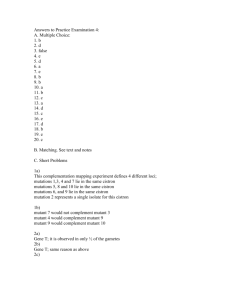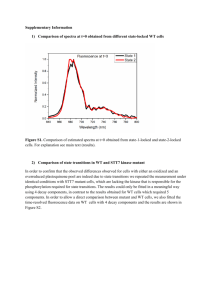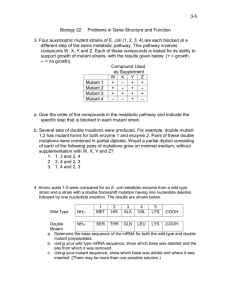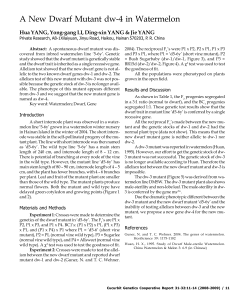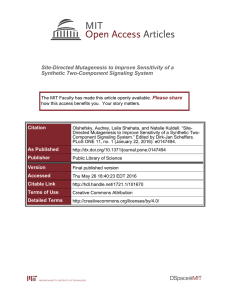ppt
advertisement
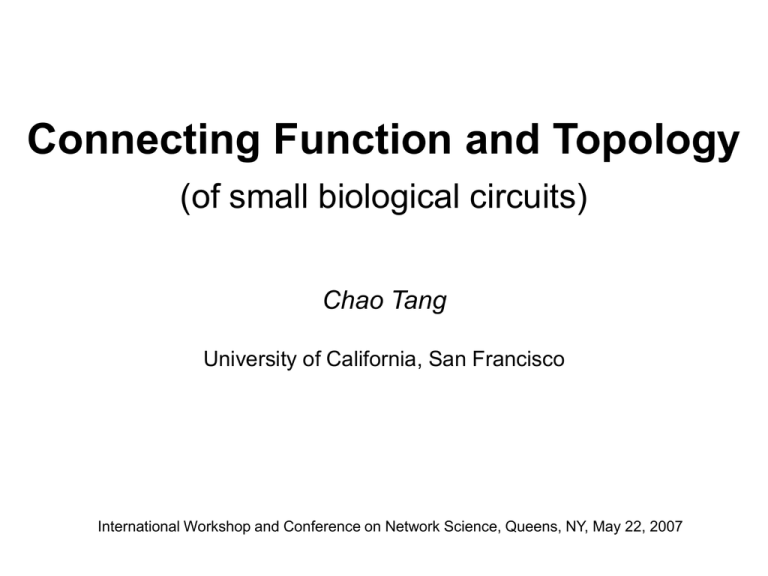
Connecting Function and Topology (of small biological circuits) Chao Tang University of California, San Francisco International Workshop and Conference on Network Science, Queens, NY, May 22, 2007 Collaborators Wenzhe Ma (Center for Theoretical Biology Peking University UCSF) Prof. Qi Ouyang Prof. Luhua Lai (CTB, PKU) Function follows form! Form follows function! (As of 5/19/2007) “Function Follows Form” -- 29,100 hits “Form Follows Function” -- 363,000 hits Form follows function Function follows form Function and form in biology Macroscopic ? ? ? ? Organismic Microscopic Molecular Bistability Oscillation [A] t A Patterning Signal transduction Homeostasis Adaptation Cell polarization Cell division …… [A] t A A Gene cascade of segmentation What kinds of networks can perform this function? Why did nature pick the one in fly? How would i design it? Need at least two components Enumerate all 2-node networks 4x2=8 edges E E W W …… A A A B B B 3 possibilities per edge 38=6561 networks …… Model of regulation A n,k B B Define B , V An An k n dB An B V n dt A kn then An 1 n A kn n/4k k A1 A2 B dB 1 An ( n B) n dt A k A dB 1 ( H ( Ai , ki , ni ) B ) dt B i A B A An example … A A A B B B … n dA 1 k1 ( n A) n dt A B + k1 n n dB 1 k2 Aout ( n B) n n n dt B A + k2 Aout + k3 Q=fraction of parameter space that can perform the function Distribution of Q values What are these 45 networks? Skeletons and families Essential Neutral Bad Very bad Three and half topological features: Positive loop on E Positive loop on W Mutual intercellular activation of E and W Mutual repression if extracellular loop Topology follows function E dA An A V n n dt A k E An An k n W A W A … W W E E W W W E E W W W E E W … Coarse-graining the biological network 3-node networks E 3x6=18 edges 318=387,420,489 networks S S Only two extracellular signaling 315=14,348,907 W W E Distribution of Q values ? Functional modules Bistability Sharp boundaries Bistability Modules for 3-node networks 108 possible combinations 44 combinations form the skeletons for all robust networks (Q>0.1) Q=0.66 Q=0.66 Q=0.48 Q=0.63 Q=0.59 Q=0.58 Q=0.50 Q=0.63 Q=0.34 Q=0.29 Q=0.26 Family size versus Q value Skeletons with larger Q have larger family size Essential Neutral Bad Very bad Q values of the modules E E W W Q = QE×QW×QB ? E module W module B module W E W E Two candidates for bionetwork ? Derek Lessing and Roel Nusse, (1998) Development 125, 1469-1476 Marita Buescher, et al. (2004) Current Biology, 14, 1694-1702 Hsiu-Hsiang Lee and Manfred Frasch, Development 127, 5497-5508 (2000) ? ptc mutant wild type W E W E W E patched mutant W continuous Hh signaling W E E W W W zw3(shaggy) mutant wild type W E W E W E zw3 mutant W continuous Wingless signaling E E E E W E Mutant tests for the two candidates Wild type patched mutant zw3 mutant, or ectopic expression of Wg W W E W E W E E E E W E W W W W E W E W E E Why fly picked this one? Q=0.61 Q=0.36 The best without any direct auto positive loop Summary • Robust functionality drastically limits network topology. • Modular structure originates from subfunctions • Modularity provides combinatorial variability – Evolvability and pleiotropy • The one selected by nature may be optimized under biological constraints – Hh and Wg signaling are utilized in other functions • More complex functions from simpler modules – Examples in transcription control and protein domains – Hierarchical build up of modules • Simplicity of biological systems Molecular Systems Biology 2, 70 (2007)


